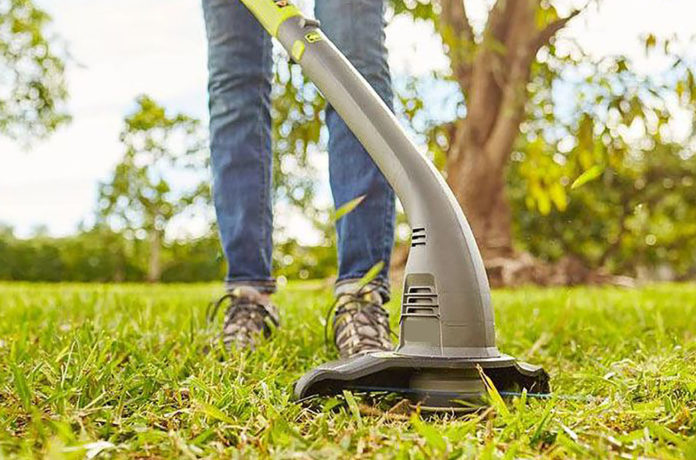
Using a battery-powered garden tool will make you dump the gas-powered or corded versions immediately. The gas-powered tools come with so much trouble apart from the obvious carbon pollution. They do not always start, are noisy and need much more maintenance.
While the corded versions can be troublesome because the cords keep getting in the way. Also, the corded tools have less reach because of the cables. With all these issues, it is very little wonder that battery-powered garden tools are sell-outs at many tool shops in Ireland.
Battery-powered garden tools are an environmentally friendly option, and most of them are powered by Li-ion batteries that you can use for multiple tools.
Reasons to buy a Battery-powered Garden Tool
- Battery-powered power tools are portable, quiet, and effective.
- There aren’t any trailing wires or pollutants to be concerned about because they don’t require petrol or an external power source.
- Because gardening equipment might not be used daily, lithium-ion batteries are useful because they charge rapidly, keep their charge, and don’t deteriorate when stored.
- The expense of purchasing several instruments can be decreased using the same battery for a brand’s assortment of power tools.
- Additionally, cordless tools require less upkeep than gasoline-powered equivalents, saving time and money.
Battery Types
Gardening equipment comes in a wide range of pricing points and battery types. Some batteries are built into the tool’s body; to charge them, you must insert a recharging wire into the device. These are often more affordable and lightweight, making them preferable for little tasks because small batteries also don’t keep a charge well enough.
Tools with rechargeable battery packs are slightly more expensive and heavier than those with inbuilt batteries, but they have more capacity and a lengthier operating time. Although you might have to go with one manufacturer, many tools come with replaceable battery packs.
Choosing the Best Battery Type
Think about how long the battery can run between charges. Consider your hedge’s height and length and the size of your grass. If short hedges are quick to trim, and a shorter battery capacity won’t be a problem.
However, if you have a sizeable lawn, you’ll want to be sure that your wireless mower won’t run out of energy in the middle of the work. If the operating time is limited, you might want to think about selecting a model with a fast charge time or purchasing a second battery to avoid being delayed for a prolonged period.
Go for battery-powered tools that feature a LED indicator on the battery or a charger that indicates how much energy is remaining or how much time is left for charging.
Li-ion Battery Technology
Lithium-ion (Li-ion) batteries are the most often used in battery-powered tools. Because Li-ion batteries are the same ones that power electric automobiles and battery storage, their technology has advanced significantly in recent years.
Thanks to significant efforts to improve the battery’s performance and efficiency, you can now anticipate the same energy from wireless tools you would obtain from corded and petrol equivalents.
Because they offer adequate power and can withstand being repeatedly charged, whether wholly or partially used, Li-ion batteries are perfect for battery-powered garden tools. This means you don’t have to stress about charging it constantly.
Lithium-ion batteries keep their energy for weeks, even when partly charged. However, this depends on usage and storage.
Popular Battery-powered tools you should add to your Gardens
You should add a piece of new battery-operated garden equipment from Carey Tools to your back garden this year by looking through their online shop.
Battery-powered Lawn Mowers
With increased power, a variable cutting height, and faster speeds to handle more challenging lawns that were previously the purview of gas-powered engines, battery packs and technologies have made rechargeable mowers a practical choice.
Most gardens are best served by pushed mowers, which can cut grass for as long as an hour on a single battery charge. There are riding lawn mowers with batteries that can easily tackle the typical city block on one single charge.
If you have a little more lawn, have a backup battery to change out. The greatest thing, though? Your noxious lawn mower won’t need petrol or grease mixing to function.
Chain Saw
A battery-powered chain saw is not the tool to cut down a big tree, but you could easily use it to cut off a dead or overhanging branch. You could also use it to take out a small tree.
Cordless Leaf Blowers
You may take this tool wherever with you because it is cordless and lightweight, including on a roof. There are a few leaf blowers on the market, and while most of them cannot collect and shred leaves into a pulp as effectively as a gas or electric model, that should be changing in the future. This is thanks to new and better battery packs.
Battery-powered Shears
Shears that run on a battery are convenient and easy to use. You won’t have to go in repetitive motions; just hold steady, and the blade will do the job for you.
Wireless Hedge Trimmer
You can also use the battery-powered version of the hedge trimmer to trim your hedges to perfection.
Tips to ensure your batteries last long
Often, people tend to neglect maintenance and proper handling. Proper care of your batteries is as important as buying from a quality brand.
Some tips for the appropriate handling of your battery are:
- Make sure you don’t leave your battery on the charger after charging. Take them and store them properly.
- Don’t use up all the power in the battery. Stop using them once you notice they are low on energy.
- Don’t expose your batteries to high temperatures; it results in quick damage.
- Protect the batteries from any moisture, or you risk damaging the circuits inside the battery.
- Use a suitable charger for the battery.
- Make sure you only connect the batteries to the right tools
- Don’t store a battery that is fully charged











